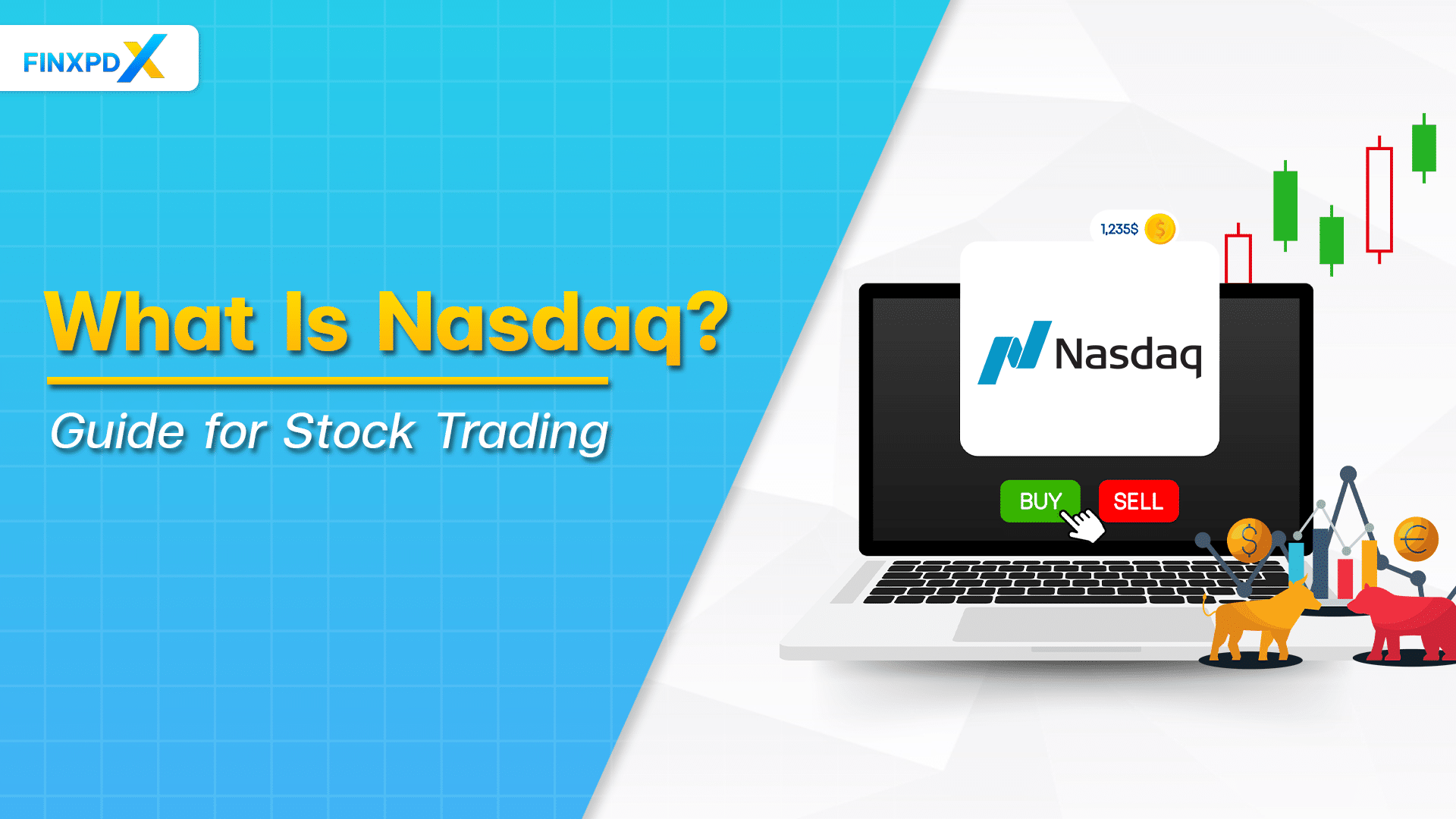If you’re tuned into financial news or planning for retirement, you’ve likely heard of Nasdaq. It’s the world’s second-largest stock market, just behind the NYSE. Some people might be curious about “What is Nasdaq?” and “What does it stand for?”. We will provide an overview of the Nasdaq definition and a step-by-step guide to investing.
What Is Nasdaq?
Although the New York Stock Exchange (NYSE) is the top global stock market, Nasdaq is a close second. This stock market is popular for tech-related businesses like Apple, Amazon, and Microsoft. It is unique for its online trading, facilitated through an efficient computer system, fulfilling its digital-first vision from inception.
Nasdaq performance is outstanding and is also a host for big companies like Starbucks and Tesla. Since it targets high-growth companies, stocks here tend to be more volatile. The market trades both listed and OTC stocks, identifiable by 4-5 letter codes. It has pioneered several firsts, like online trading and cloud-based data storage.
In 2008, Nasdaq merged with OMX ABO in Stockholm and formed Nasdaq Inc. This company allows trades in various financial products, including ETFs and debt.
Key Takeaways
- Nasdaq is a global platform for electronic stock trading.
- This stock market is used by a wide range of market participants, from individuals to institutions.
- The trading mechanism at this stock market is automated and electronic, differing fundamentally from traditional exchanges.
How the Nasdaq Works
The Nasdaq started as a way to get instant stock quotes and focused on over-the-counter (OTC) trading from the beginning. It added automated trading systems that give real-time info on how many shares are being traded. This exchange was one of the first to offer online trading.
If you want to buy or sell on this stock market, you have to go through dealers, who are sometimes called “market makers.” to complete the trades.
There are three different factors that should be considered during trading with this stock market.
Nasdaq Trading Hours
The Nasdaq operates from 9:30 a.m. to 4:00 p.m. However, it also offers extended trading hours, with “pre-market” sessions from 4 a.m. to 9:30 a.m. and “post-market” sessions from 4 p.m. to 8 p.m.
Nasdaq Listing Requirements
To get listed on the Nasdaq, a company must:
- Show strong financials, liquidity, and governance
- Hold a valid SEC registration
- Have at least three market makers
- Meet size and trading volume criteria
Nasdaq U.S. Market Tiers
Global Select Market
This is for big companies, both from the U.S. and other countries. These companies have passed strict rules to be here. Each year, Nasdaq checks if they still meet these high standards.
Global Market
This is for medium-sized companies from the U.S. and other countries. This stock market lists these shares on its own exchanges.
Capital Market
This is for smaller companies. It used to be called the SmallCap Market. These companies don’t have as much money as those in the other two markets.
Nasdaq vs NYSE
Here are the key differences between the Nasdaq performance and the New York Stock Exchange (NYSE):
- Trading Style: The Nasdaq is fully digital, while the NYSE combines both online and in-person trading.
- Market Type: This stock market is a dealer’s market, whereas the NYSE is an auction-based platform, focusing on direct deals between buyers and sellers.
- Sector Focus: Nasdaq leans heavily on technology companies, while the NYSE has a broader range of industries.
- Market Stability: This stock market stocks are more volatile and focused on growth, while NYSE stocks tend to be more stable.
How to Invest In the Nasdaq (Step-by-Step)
Investing in the Nasdaq can be a great way to diversify your portfolio and tap into the fast-paced world of technology and innovation. Here is a step-by-step guide for investing in this stock market:
1. Set Your Financial Goals
Think about why you’re investing, whether it is for short-term gains, long-term growth, or maybe income through dividends.
2. Research the Market
Study the Nasdaq’s components. Know what sectors it emphasizes (e.g., technology, consumer services).
3. Choose a Trading Platform
Select a reliable trading platform or brokerage that allows you to buy and sell Nasdaq stocks.
Look for low fees and a user-friendly interface.
4. Understand the Basics of Trading
Get familiar with trading terms and how the stock market works. This can include understanding bid-ask spreads, market orders, and limit orders.
5. Analyze Potential Investments
Dive deeper into the companies you’re interested in. Look at their fundamentals, check out their balance sheets, and read recent news about them.
6. Create a Diversified Portfolio
Don’t put all your eggs in one basket. Aim for a mix of different stocks to help minimize risk.
7. Monitor Your Investments
Keep an eye on your portfolio and the market conditions. Be ready to adjust your investments as needed.
8. Review and Rebalance
Periodically review your investment strategy. Make any necessary changes to align with your financial goals and market outlook.
Conclusion
The goal for Nasdaq performance is to become an innovative digital marketplace where companies can list their shares. Investors can easily buy or sell these shares through brokers or middlemen. Since it is recognized as the world’s first electronic stock exchange, this stock market has become a leading platform for trading shares in many top-tier global companies.
This market has unique hours and rules, and It’s a good choice for tech investments. However, stock prices can change quickly, so understanding the Nasdaq definition and how it works is helpful for you to make informed decisions during trading with this stock market.
FAQs
Nasdaq is an American stock exchange where shares of technology and other growth-oriented companies are traded.
Nasdaq stands for the National Association of Securities Dealers Automated Quotations
Nasdaq’s regular trading hours are from 9:30 a.m. to 4:00 p.m. Eastern Time, Monday to Friday.
This stock market is located in New York City, specifically in Times Square.
Related Articles:
- Small Cap Stocks: High Risk, High Reward?
- Large-Cap Stocks: A Good Choice for Long-Term
- P/E Ratio: A Crucial Thing for Stock Analysis
Read more: Stocks








